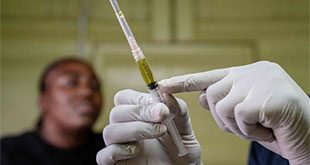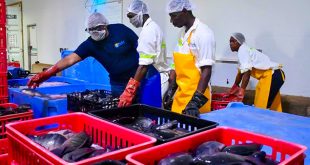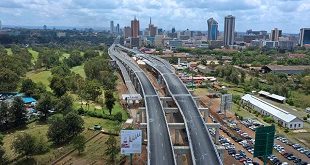
By Agather Atuhaire
Experts allege importation of faulty turbines. Is investors denial enough?
When the Minister for Energy and Mineral Development, Irene Muloni, announced a new power tariff on Jan. 12, she assured Ugandans that the tariff will reduce once all the five units of Bujagali Hydropower Dam have come on board.
But The Independent has established that electricity tariffs are likely to either remain high or go even higher if the government accepts the payment plan proposed by Bujagali Energy Limited (BEL).
The BEL power tariffs remains uncertain because of the many, and sometimes contradictory, numbers being mentioned. Minister of State for Energy, Simon D’Ujanga, says BEL will be selling Bujagali power to Uganda Electricity Transmission Limited at 12 US cents/ kwh in the first 13 years. But a statement BEL sent to The Independent says the tariff will not be “constant” but will be a “profile” averaging at between 10 US cents over the 30 years before the dam reverts to government-ownership and peaking at 16 US cents in 2022.

The BEL tariffs make the Bujagali power 5 to 8 times higher than the power being consumed currently from the Kiira and Nalubaale dams which sell at 2 cents. The D’Ujanga rate would be even higher. The question is why?
Analysts have argued that there is no justification for Bujagali tariff to go beyond 10 cents. They go on to say that if the investment cost of Bujagali was with in the internationally accepted range, the tariff could have been 5 cents or lower. If the project period is 40 years, then the loan can be paid even when the tariff is at below 5 US Cents per kwh according to the cash flow analysis. This would be a boost to the national economy and social economic transformation.
The Bujagali power is just 14 – 22 cents lower than the thermal generators which sell between 24 – 34 cents depending on the exchange rate and the fuel prices. But D’Ujanga says the tariff will be high for only the time when BEL will be paying back the US$875 million loan that was used to construct the dam. He says 13 years; the tariff rate will go as low as 8.5 cents. In cash flow analysis of D’Ujanga’s figures created by The Independent, this would amount to:
1. (i) During Year 1, when the tariff is at US Cents 12, BEL, the investor will earn net profits of US $ 48.3 million, increasing annually by over US $ 7.2 million. And on the 12th year he would earn US $ 135.63 million.
(II) During the project period (13 years) at the tariff of 12 US Cents, BEL would earn net profits of US $ 1.4 billion and if taxed earns 0.98 billion.
2. (i) Even at 10 US Cents tariff, the Investor will earn net profits of US $ 13.25 million during the first year, increasing gradually by over US $ 7 million annually to US$ 166.72 million during the 13th year.
(ii) During the project period of 13 years, the Investor will earn net profits of US $ 906.48 million and if taxed, would earn US $ 634.54 million.
Why high tariff?
Kwesigabo Johnson, a former lawyer at the Electricity Regulatory Authority, who is among the people that negotiated with BEL on behalf of the government, says this tariff is justified. He says it is true that hydro power is cheaper than thermal but says the initial investment of hydro is much higher than the investment of thermal.
“Although the running costs of hydro are much cheaper than thermal, the initial costs of a hydro plant are high,” said Kwesigabo.
He told The Independent that Ugandans will endure the relatively high tariff rate saying it is not higher than what they have been paying to thermal generators until BEL recovers its investment costs. However, this contradicts the pledge by the government that Bujagali power would reduce the cost of electricity to consumers.
Kwesigabo says Kiira dam cannot be compared to Bujagali because unlike, Kiira and Nalubale which were public financed projects, Bujagali is a public private partnership project. He adds that Nalubaale is an old dam, so the costs have already depreciated and for the new dam at Kiira, the loan that constructed it was taken over by government. The Director Ministry of Energy and Mineral development, Paul Mubiru, says the loan on Kiira is required to be paid in 40 years with a grace period of 10 years at an interest rate of only 0.75 percent.
In contrast, according to BEL, the Bujagali loan has various tranches but will largely be paid over a 20 year period with a five-year moratorium. Payment will start in November, 2012. A cash flow projection based on these and other figures would show that BEL will earn enormous profits as shown below:
1. (i) If there is a ten year grace period, at 12 US Cents tariff, the Investor would earn net profits of US $2.018 billion. If taxed, he will take home US $ 1.412 billion. This could even pay off the loan.
(ii) During Year 1 of loan repayment period, when the tariff is at US Cents 12, the Investor will earn net profits of US $ 166.67 million annually, increasing annually by over US $ 0.2m, and on the fortieth year he would earn US $ 173.12 million annually.
(iii) During the project period (40 years) at the tariff of 12 US Cents, the Investor would earn net profits of US $ 7.285 billion and if taxed earns $ 5.099 billion.
2. (i) Even at 5 US Cents tariff, the Investor will earn net profits of US $ 43.94 million during the first year, increasing gradually by over US $ 0.2m annually to US$ 50.39 million annually during the 40th year.
(ii) If the project has a 40 year period, the investor will earn net profits of US $ 2,348.82 million and if taxed, would earn US $ 1,637.17 million.
Mubiru says “there is no pressure on the loan that constructed Kiira dam but the agencies that lent money for Bujagali have different terms”. He says being various bodies- International Finance Cooperation, the European Investment Bank, the African Development, Stanchart, Holland’s FMO, PROPACO and DEG/kfw have different terms and different interest rates.
“Comparing Bujagali with these two dams is surely like comparing tomatoes and oranges,” Mubiru told The Independent.
Bujagali power plant has so far cost $862 million according to Sithe Global Vice President, Glenn Gaydar. US$191 million of that money is equity where the government contributed US$20 million from the assets it inherited from the first contractor of Bujagali1 AES with the balance obtained from various international financial bodies, as a loan. We should note however that, during the contract award, the contractor’s cost for Bujagali was only US $ 460 million, but now it is US $ 862 million.
Ugandans, Mubiru suggested, should not worry themselves with the Bujagali tariff. He said their only concern should be Bujagali to produce all the expected 250MW so that “we solve this surging power shortage”.
“The dam will not change anything about the current tariff, so there should be no worries that BEL will be selling at 12 cents,” he said.
But Ugandans who consume electricity have to worry, since the cost outstrips their domestic earnings. In most countries, utility bills do not exceed 10% of a family’s domestic income. This guarantees decent living, with enough money left for house rent, food, clothing, school fees, transport, etc. Distorted costs also distort life. BEL selling Bujagali power to UETCL at 12 cents mean the end user pays over 24 cents (Shs.540) per unit and above.
Hidden dangers
African Institute for Energy Governance Dickens Kamugisha say that Ugandans might never know the actual tariff of Bujagali. But he says for any one to know whether the tariff of Bujagali is fair or not, there is need to know the truth about the cost of Bujagali which is considered the most expensive dam in the whole world considering its generation capacity of 250MW.
Kamugisha however says the cost of a dam depends on its location, size, the economic conditions of the country, its investment risk, and the accessibility to raw materials.
There are dams like the Three Gorges Dam in China which is said to have cost about US$25 billion which is logical for the largest dam in the world with an installed capacity of 21,000MW.
Keeping other factors constant, constructing each Mega Watt at the Three Gorges dam cost about US$1.2 million but a megawatt at Bujagali cost US$3.6 million.
“In the same period, Sudan has built a dam of 1,500mw at US1.3 million per mw, Ethiopia at US 1.1 million per mw, etc,” Kamugisha said. “Ugandans need a forensic audit of Bujagali dam not just relying on what the politicians and the companies tell us”.
Kamugisha says the Auditor General should audit the cost of the dam saying that for any one to understand the tariff of Bujagali power, they must understand everything right from the inception of the dam.
But Ugandans, Kwesigabo said, will not pay high power tariffs for a long time. “Karuma which is a government financed project will have come on board and the tariffs will go down,” he said.
Although both BEL and ministry of Energy officials claim the high tariffs they have agreed are for servicing the loan, analysts say, that BEL would still get the money to pay back the loan selling power at less than 10 cents.
If Bujagali generated 200MW out of the installed capacity of 250, the investor would make US$210 million per year selling power at the proposed tariff of 12 cents. If the loan was to be reimbursed in 13 years as projected by D’Ujanga, the investor will have made US$2.7 billion which would pay back the US$860 million loan and the investor remains with US$1.8 billion.
If the tariff was at 10cents, the investor would make US$175 million per year which makes it US$2.2 billion after 13 years. The investor would still make a profit of US$1.4 billion after paying the loan.
If Bujagali generated and sold 250MW to UETCL, the investor would make US$263 million per year selling at the proposed rate of 12 cents. That means it will take BEL only 4 years to repay the loan.
If the investor paid an interest of 11 percent per year, he would make a profit of US$1.2 billion after 13 years selling at the proposed tariff of 12 cents. If the tariff was at 10 cents, BEL would make about US$740 million profit after paying the loan and interest and the maintenance costs.
If that money was taxed like any other income, BEL would still remain with US$517 million profit and $837 million selling at either 10 or 12 cents respectively.
Bujagali dam has so far completed one of its five 50MW units. The 250MW dam is expected to be commissioned by July this year. William Groth, the construction manager, said the second turbine will start generating power this month after which it will under go a reliability test. “The second turbine should be ready to add power to the grid in about three weeks,” said Groth in early March.
But members of the Parliamentary Committee on Energy had said in late February that even the turbine that Prime Minister Amama Mbabazi claimed to have commissioned on Feb.2 is yet to add power to the national grid. The committee said it got information that Bujagali is still contributing “Zero Mega Watts” and UETCL Managing Director, Erias Kiyemba, told the committee that the unit was still “undergoing a reliability test”.
Despite assurances, there is therefore, apprehension created when the Bujagali turbine failed and had to be dismantled and re-assembled. While reporting the failure, BEL said there was a leakage during testing of the new machines performance.
But reports from the site engineers point to either low quality, refurbished, from reconditioned old turbines imported through China. New turbines are always fabricated on order and thoroughly tested at the factory against all forms of hydraulic pressure, to ensure performance, the sources said. Turbine producing industries do not allow for risks associated with the integrity of their products as competition for market is stiff. The failure reported at Bujagali would have compelled the manufacturer to recall the turbines and replace them with new ones at no costs. But it has not happened, which makes the whole thing suspect, they added.
When asked about these allegations, A BEL offical said: “The more I think about the allegations, the more I consider how ridiculous they are! To disassemble the turbine would mean breaking tones of concrete and there is no way it could be transported due to sheer physical size.”
The official said the turbines are manufactured by Alstom, a French company.
From the above scenarios, government has been advised to institute independent technical and Financial Audit of the Bujagali Hydropower Plant. Experts told The Independent that the audits should not involve the bureaucrats from the Energy ministry, as they are interest parties. The government must also ensure that Karuma does not follow Bujagali’s path on shifting costs, high tariffs, and unreliable installations.
 The Independent Uganda: You get the Truth we Pay the Price
The Independent Uganda: You get the Truth we Pay the Price





